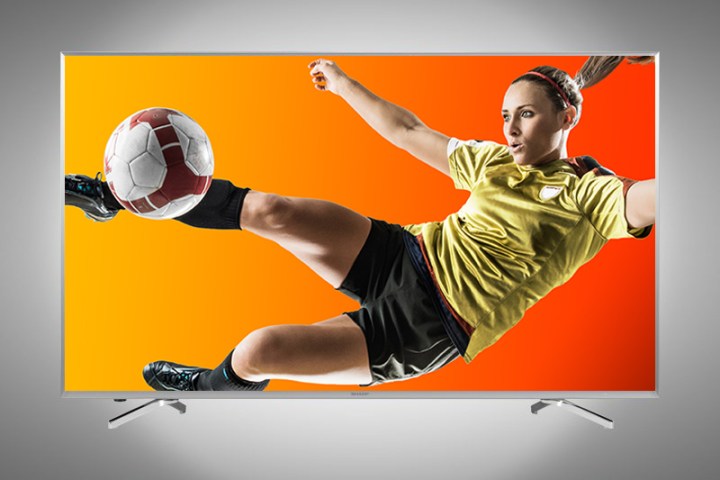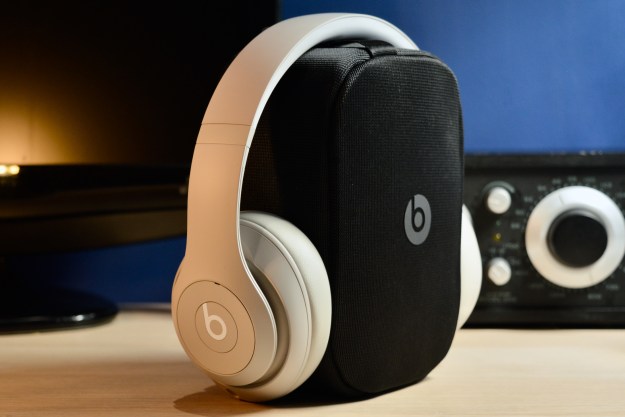
This year, the company is unveiling a total of 21 televisions, headlined by its P9500 and P9000 series, both of which offer support for high dynamic range (HDR) and wide color gamut. The P9500 goes a step further by using quantum dot technology, but Sharp maintains that both the P9500 and P900 function as its flagship models for 2017.
P9500 Series

With Ultra HD Premium certification, the P9500 is referred to as the “crown jewel” of Sharp’s 2017 lineup. Alongside the quantum dot technology and HDR, this model also features Motion 480, for smooth, articulate motion in fast-moving scenes in movies or TV, especially sports. Full array local dimming makes for some of the the darkest blacks outside of an OLED TV, and the Revelation upscaler takes standard and high-definition content and scales it to near-4K quality.
While it hasn’t happened yet, Sharp expects the P9500 to receive THX certification. This mostly has to do with the picture, but the TV also features dbx-tv audio processing. Like most of Sharp’s 2017 lineup, this is a smart TV, complete with an app store and built-in web browser, as well as apps like Netflix, Amazon, and YouTube preloaded.
The P9500 series is available in two different models, with the 75-inch class 75P9500U selling for $8,000, and the 70-inch class 70P9500U priced at $6,000.
P9000 Series
As the other flagship in Sharp’s 2017 lineup, the P9000 keeps many of the same features of the P9500, but is much more affordable. This model uses an edge-lit LED screen and ELED local dimming, so it won’t offer the same contrast levels as the P9500, but with HDR and wide color gamut, it still has plenty of contrast and color depth to offer.
Instead of Motion 480, this model offers Motion 240, though the same Revelation upscaler featured in the P9500 is also included here, meaning even your older movies and TV shows will look new on this TV.
There are three different available sizes for the P9000, with the largest being the 65-inch class LC-65P9000U, which will retail for $2,000. The 55-inch class LC-55P9000U is priced at $1,300, while the 50-inch LC-50P9000U will sell for $1,000.
P8000 Series

While the above models claim flagship status, Sharp says it expects its P8000 and P7000 models to be its best sellers this year, due to the balance of price and features. In the case of the P8000, there are many similarities to be found between it and the P9000 series, but the price isn’t one of them.
This series offers HDR, but not wide color gamut, with DLED local dimming. Motion 120 is here instead of Motion 240, and while it doesn’t feature the Revelation upscaler, it does feature a different upscaler to bump up your old content to near-4K resolution. All the same apps and smart TV features as the above models are included here.
There are four models in the P8000 series, with the largest being the 75-inch LC-75P8000U, which sells for $2,700. The other models are priced much more modestly, with the 65-inch LC-65P8000U retailing for $1,300, the 55-inch LC-55P8000U selling for $900, and the 50-inch class LC-50P8000U priced at $700.
P7000 Series

The P7000 series trims down many of the features to offer a 4K, HDR-compatible TV to those who don’t want to spend as much on a TV. Motion 120 and local dimming are missing here, though the series still features a
There are four models in the P7000 series, starting with the $1,000 65-inch class LC-65P7000U. The 55-inch, 50-inch, and 43-inch models are priced at $650, $550, and $450 respectively.
P5000 & P3000 Series

The P5000 and P3000 series are HDTVs without most of the features of the above models, with the main difference between the two being that the P5000 series is made up of smart TVs, while the P3000 series TVs lack smart functionality. The most expensive of these models is the 55-inch class LC-55P5000U smart TV, which sells for $530, while the 32-inch LC-32P3000U, which offers no smart features, sells for $180.
Information on when these TVs will be released is limited for the time being, but we expect to hear more details soon.


